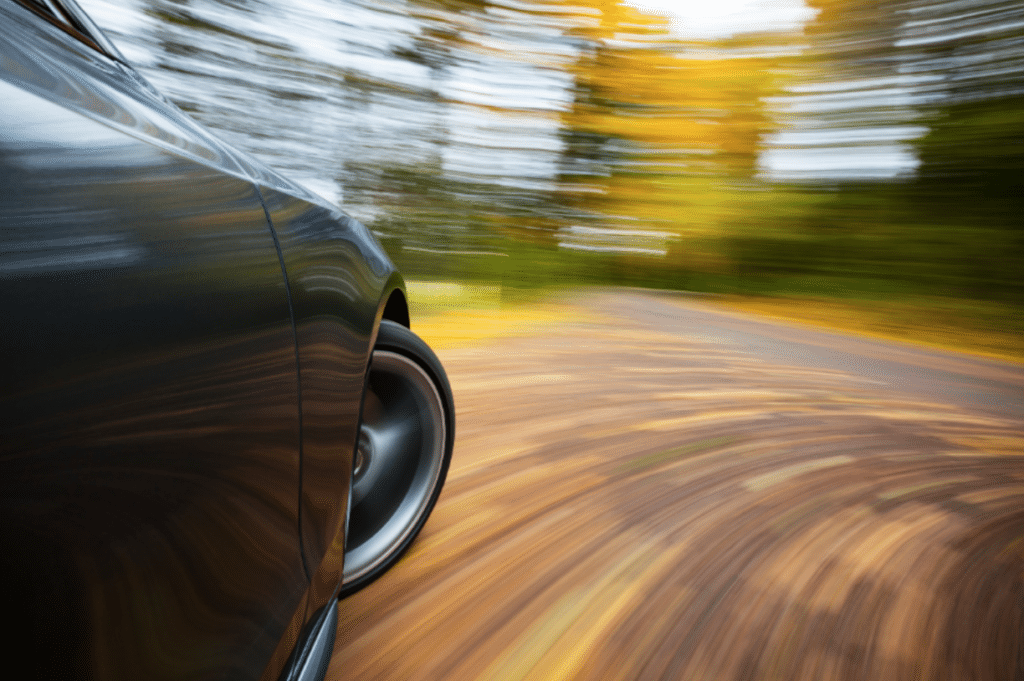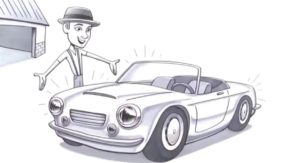There are so many things to love about the fall. From the changing leaves, carving pumpkins, or the perfect weather for sweaters. When it comes to driving though, some tips to drive more safely in the fall may come in handy.
From summer to fall, the changes in weather can add some challenges. Fallen leaves, frosty weather, and fewer hours of daylight add complications to driving safely. Learn some tips and tricks for being prepared on the roads ahead.
Navigating the Driving Hazards

When it comes to fall weather, it’s important to recognize the possible road hazards that new weather brings. With the cold, comes new environment changes for you and your vehicle. Navigating those changes is essential to driving more safely in the fall.
Some common hazards brought on by fall weather include:
Pressure Changes
The outdoor temperatures change drastically during the fall. Rising and falling consistently. The changes may often cause your vehicle’s tires to expand and contract. Therefore causing loss of air pressure.
It’s important to check your tires regularly and ensure they are always inflated properly.
Most times you can find the proper requirement of air pressure for your vehicle’s tires in the owner’s manual, or on the inside seam of the driver’s side door. It will usually be measured in PSI (pounds per square inch).
Falling Leaves
One of the most significant signs of fall that we all love to see, are the colors of the changing leaves. Though beautiful, after they turn, they then fall to the ground. Blowing in roads, driveways, etc.
That’s when they can possibly become hazardous. According to the National Center for Rural Road Safety, if the leaves become soggy they could become as dangerous as a patch of ice when driving. Another possibility are the leaves covering possible road hazards, such as potholes.
If while driving you see wet leaves ahead, proceed with caution!
Kids Crossing
Fall in the air, means school has continued in session. Adding more traffic to the streets of vehicles and pedestrians.
Not only does road traffic increase, but school buses and frequent stops for children become an everyday occurrence.Ensure to always follow the school zone speed limits and always be alert for possible crossing pedestrians.
Especially on one of our favorite fall Holidays: Halloween! With dozens out and about, especially after dark. Keep your eye out for trick-or-treaters on October 31st.
Slippery Roads
Another common thing fall weather brings, are slippery roadways from rainfall. Rain, or other cold weather conditions can make visibility while driving difficult. It can also cause hydroplaning.
In the early mornings when it’s more cold, frost can occur and cause more road hazards. It’s important to stay alert, don’t follow other vehicles closely and avoid any sudden braking.
If fog is present, use your vehicle’s low beams and stay far enough away from other cars to give yourself adequate stopping time in case of sudden need.
Deer on Roadways
Because fall does mark the beginning of deer’s breeding season, that means a high increase in deer activity on roadways. As a driver, it’s important to watch carefully for deer darting into roads and reacting accordingly.
Because it is their breeding season, the deer aren’t paying close attention and are acting with less scarcity than usual. Eager to find mates and traveling long distances.
They are also nocturnal feeders, meaning they’re most active at dangerous hours. From sunset to sunrise, in the dark.
Help reduce collisions, or accidents involving deer.
Following are some safety tips to drive more safely in the fall, during deer season:
- Always, but especially when deer crossings signs are present, slow down and be extremely cautious to possible deer running into the road. Don’t follow vehicles closely to increase your reaction time.
- Ensure younger drivers are aware of the increased hazard of deer crossing.
- If driving during their high travel hours, evening to morning, be especially careful.
- Deer often travel in small herds. If you see one, there’s probably more around it. Keep a look out for others.
- Always wear a seatbelt and never drive impaired. Being vigilant and proactive is important.
If you do come across a deer, or other animal in the road, try your best to avoid swerving to avoid it. Swerving can cause over correcting and a dangerous traffic accident.
The safest reaction is to keep the wheel stable while easily coming to a complete, controlled stop.
Driving in the Dark
On November 1, 2020, the clocks turn back. Meaning that sunset will come one hour earlier than normal. Which means less daylight and more chances of driving in the dark.
That brings the time for your car’s lights to come on earlier and for you to drive slower. Especially if you have any pre-existing vision problems. Such as being nearsighted, have night blindness, or just poor night vision.
Any one of those issues can affect your depth perception, color contrast, and create a major glare from oncoming traffic’s lights, or streetlights. Compromising your vision and increasing the danger of driving safely in the fall.
If you do find it difficult to see well while driving at night, get your vision tested, or try to avoid it when possible.
Vehicle Safety Tips

When it comes to driving more safely in the fall, you’re not the only one who needs looking after. Your vehicle’s maintenance and durability matters just as much!
Keeping up with regular maintenance, as well as ensuring you have everything you need to combat fall weather while driving.
A list of things to make sure your vehicle includes:
- Making sure your headlights, fog lights, and high beams are all in working order. No burnt out bulbs or foggy lights. You want to always have a clear line of vision when needed. Especially high beams for driving around possible wildlife.
- If your windshield wipers show damage or signs of wear and tear, it may be time to replace them. Before fall rain, condensation, or frost comes. Make sure you have good blades to keep your line of vision clear as well.
- Fall weather can mean unexpected events. Keeping an emergency safety kit in your vehicle is a good idea. To combat any possible hazards that may lie ahead. Especially with cold weather, make sure you have what you need in the event of a breakdown.
In the event of a Collison
If you’ve prepared yourself for new weather conditions and have considered these tips to drive more safely in the fall, accidents can sadly still always happen.
Slick roads, crossing pedestrians and wildlife. The hazards are real and collisions are not uncommon. In the event of a collision with your vehicle, there are always experts to help!
At East End Auto Body Shop, we specialize in vehicle collision repair and will help you and your vehicle get back on the roads safely this season. Contact us today, or visit our website for more information.

